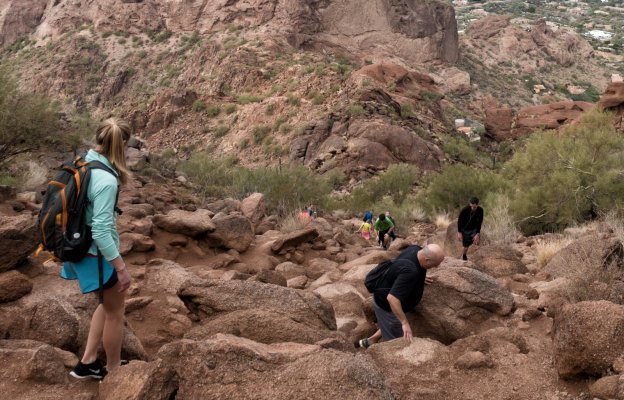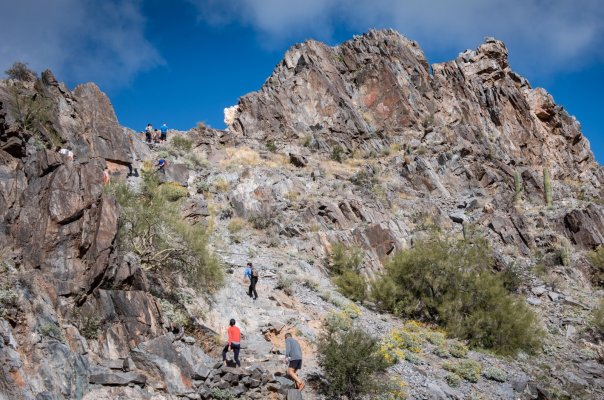Colorado Resident here.. all of the suggestions made are excellent. Hiking Poles (more for the trip down), Camelbak, etc. Hydrating overall is important while hiking in a semi-arid/arid climate. I will typically hydrate the day prior to a long hike - about 1L per 5 miles - in addition to my regular intake.
There is a significant difference between "being affected by the altitude" and "altitude sickness" or AMS.
Exercising at a greater altitude than one is use to, and being out of breath is "being affected by the altitude", this is completely normal as your body is adjusting to the oxygen level.
AMS (Acute Mountain Sickness) comes from rapid ascent in elevation/altitude. Symptoms include headache, nausea, being out of breath. AMS doesn't care who you are or your current fitness level. It can affect anyone and does so in different ways. Hydration can help, as will Aspirin - it helps thin the blood. Taking one's time to gain elevation is the easiest way to avoid AMS. Traveling from 0' to 9000' (Florida to the ski slopes) in one day is begging for trouble. Take a day in Denver or Colorado Springs to break up the trip & acclimatize.
How to prepare for Hiking in Colorado..?? Well, we get out and just do it. There are plenty of lists to complete.. the 14ers, the centennials, the 13ers, on & on! I personally utilize the Incline several days a week:
https://manitousprings.org/where-to-play/manitou-incline/ 2000' of gain in less than a mile, is a nice way to start your day!
For those who are coming to visit & want to have a fun time hiking some of the most gorgeous routes in Colorado.. I suggest what the others have mentioned: Stairclimber, Lower Body Exercises (squats, lunges, wall sits), HIIT.. Something a little more knee friendly would be a treadmill @ max grade (some go up to 30%) for 20 mins at 2 mph. Adding grade to a walk/run on a treadmill does amazing things for your legs/butt/back & heart.
Anyone who is interested in some light reading about Hiking Colorado's 14ers, I suggest:
Halfway to Heaven: My White-knuckled--and Knuckleheaded--Quest for the Rocky Mountain High by Mark Obmascik
Most importantly.. Be Prepared & Have Fun!!!


